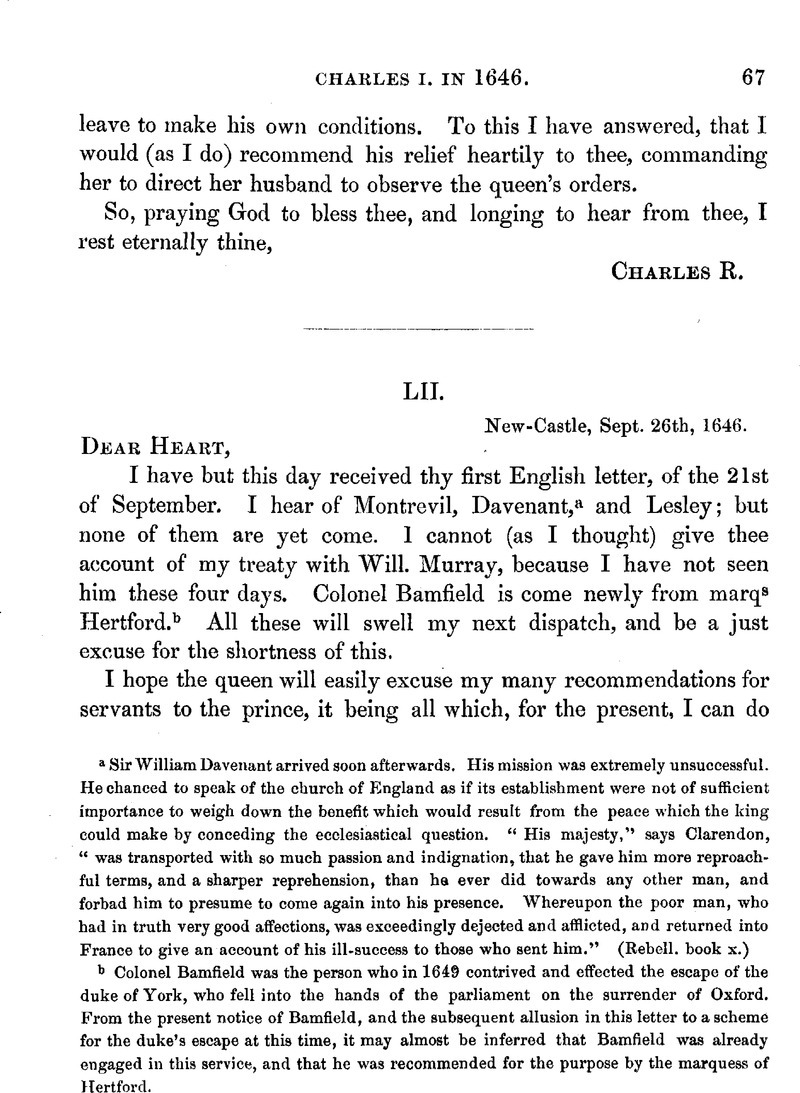No CrossRef data available.
Published online by Cambridge University Press: 23 February 2010

page 67 note a a Sir William Davenant arrived soon afterwards. His mission was extremely unsuccessful. He chanced to speak of the church of England as if its establishment were not of sufficient importance to weigh down the benefit which would result from the peace which the king could make by conceding the ecclesiastical question. “His majesty,” says Clarendon, “was transported with so much passion and indignation, that he gave him more reproachful terms, and a sharper reprehension, than ha ever did towards any other man, and forbad him to presume to come again into his presence. Whereupon the poor man, who had in truth very good affections, was exceedingly dejected and afflicted, and returned into France to give an account of his ill-success to those who sent him.” (Rebell. book x.)
page 67 note b Colonel Bamfield was the person who in 1649 contrived and effected the escape of the duke of York, who fell into the hands of the parliament on the surrender of Oxford. From the present notice of Bamfield, and the subsequent allusion in this letter to a scheme for the duke's escape at this time, it may almost be inferred that Bamfield was already engaged in this service, and that he was recommended for the purpose by the marquess of Hertford.